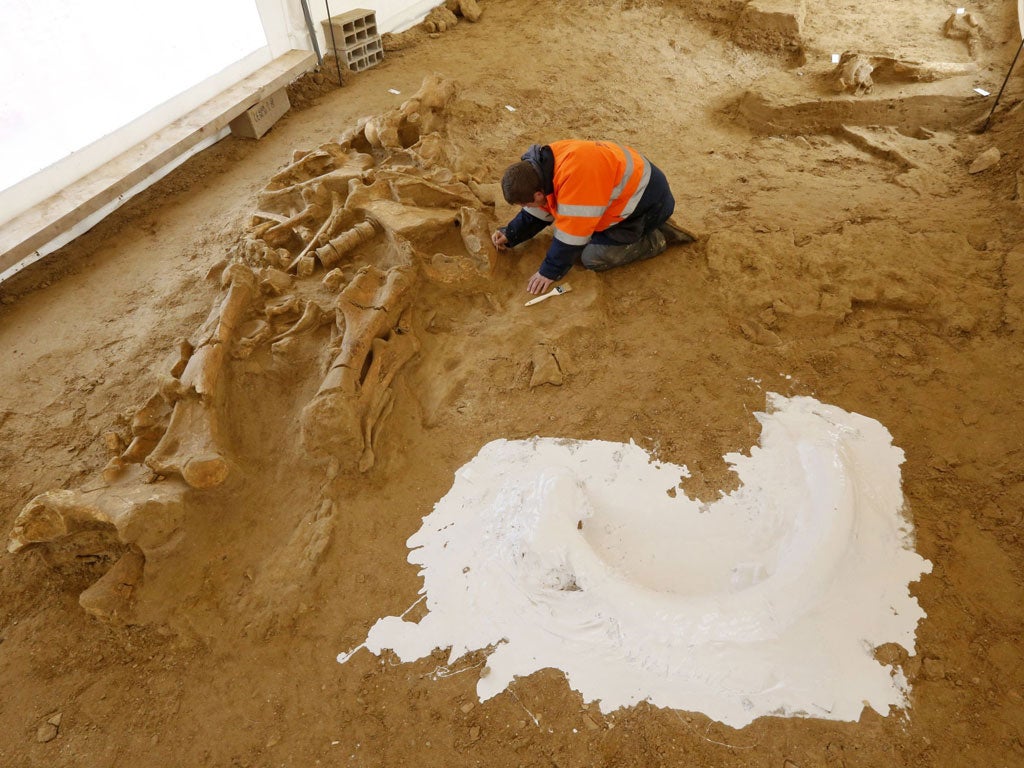A mammoth find in France provides evidence of a savage demise
Neanderthals may have dealt killer blow

The first complete mammoth skeleton to be found in France for more than a century has been uncovered in a gravel pit on the banks of the Marne 30 miles north-east of Paris.
The find, first made in July but kept secret until this week, has yielded a second, even more exciting, discovery. Two tiny fragments of flint blade have been found embedded in the mammoth's skull close to one of its tusks.
Archeologists speculated, when they first found "Helmut le Mammouth" that he had come to a sticky end between 130,000 and 190,000 years ago. They concluded that the animal, maybe 9ft high and weighing up to five tonnes, had foundered on soft mud or quicksand.
Now another possibility arises. The mammoth could have been attacked by one of the bands of Neanderthal men and women who wandered over the European tundra in the cold, dry period between two ice ages more than a thousand centuries ago. The predecessors and distant cousins of Homo sapiens must, at the very least, have feasted on the mammoth's carcass, possibly some time after its death.
"What we have found here is a moment in pre-history in an absolutely extraordinary state of preservation," said Pascal Depaepe, technical director of the French national institute for preventative archeology, INRAP. "It is my belief that the mammoth was butchered by Neanderthals on this spot. Whether the animal was hunted down by them, or found dead some time later, we may never be able to tell. The concept of rotten meat is, after all, a relatively modern idea."
No complete, or almost complete, mammoth skeleton has been found in France since the late 19th century. Only two other Paleolithic sites in western Europe have produced signs of human activity directly linked to mammoth remains. Both are in Germany.
In the next few days, the remains of "Helmut" will be removed from the gravel quarry at Changis-sur-Marne, just north of Meaux, in the Île-de-France. Archeologists and zoologists are nor sure yet whether the creature was a "small male or a large female".
"The bones have to be removed from the site rapidly because they could be damaged by exposure to the elements," said Stéphane Péan, a paleo-zoologist from the Muséum National d'Histoire Naturelle in Paris. Eventually, it is hoped that it will be possible to reassemble Helmut and put him, or her, on display at the museum in Paris.
The woolly mammoth was about the size of its distant relative, the Asian elephant. From roughly 190,000 years ago until the demise of the last herds in Siberia 10,000 years ago, they roamed North America, Siberia and Europe.
Subscribe to Independent Premium to bookmark this article
Want to bookmark your favourite articles and stories to read or reference later? Start your Independent Premium subscription today.

Join our commenting forum
Join thought-provoking conversations, follow other Independent readers and see their replies